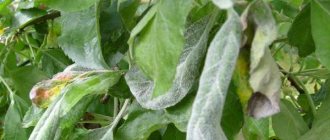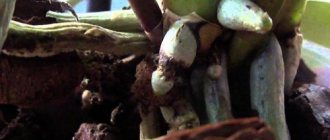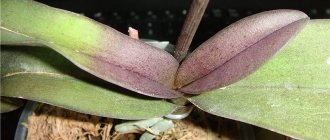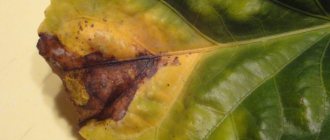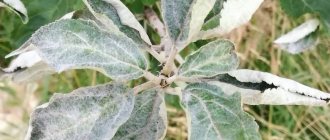Peonies, compared to other garden flowers, get sick less often and are practically not affected by pests. Common causes of most problems are the wrong variety, planting in the wrong place and insufficient care. The plant has few enemies among insects, but there are plenty of diseases. In the early stages, infections and insects cause little harm; it is important to quickly identify and solve the problem.
If no mistakes were made during planting or care, then the source of the damage was the planting material. Infections can spread to peonies with a number of growing, affected plants; they are spread by pests, wind and water. Fungi and bacteria can be introduced into a flowerbed with dirty shoes or insufficiently cleaned garden tools. Before starting treatment, you need to carefully examine the bushes to recognize the type of disease or insect.
Ants on peonies: how to get rid of them and how to treat buds and flowers
The best varieties of peonies for the Moscow region with photos and descriptions
Feeding peonies in autumn, spring and summer with fertilizers and folk remedies
Tree peonies in the Moscow region: varieties, planting and care, preparation for winter, reviews
Treatment of peonies for gray rot
Gray rot (Botrytis) - Botrytis paeonia Oud - is the main and most widespread disease of peonies in our region. As a rule, symptoms of gray rot appear on peonies either in the spring (in central Russia - in the third ten days of April, especially intensively - in the wet season), or in the summer - in early autumn (when it rains and there is high air humidity, with increased soil acidity , excess nitrogen fertilizers, heavy clay soils, high groundwater levels, dense plantings, unventilated areas).
The most dangerous outbreak for plants is the spring outbreak of the disease, at the time of active growth of shoots.
As can be seen in the photo, with this disease in peonies, shoots growing rapidly at this time with very soft tissues are affected where the stems emerge from the ground:
A rotten dark area appears on the side of the stem. Very soon the stem falls. Black sclerotia are visible on rotting tissues.
In other years, at high temperatures during the period of active growth, gray rot of peonies affects the stems in the middle part: the plant bends in this place, the top withers. If the soil is carefully raked away, botrytis damage to the base of the stem will be noticeable on the underground part of the damaged shoot. This is thought to be the result of a short spring quickly turning into hot weather in May.
After sufficient regrowth and hardening of the stem tissues, in the third ten days of May, stunted and weak stems are mainly affected.
The second time the appearance of the disease can be observed in the summer-autumn period. The buds, sepals, and petals (at the base) rot, brown spots with a gray coating appear on the leaves, the stems and leaves darken and dry out. When cutting through a stem affected by the disease, brown rings are visible.
Let us note once again that the external manifestation of botrytis is facilitated by the cold season, rains and high humidity. In almost any adult plant, to one degree or another, traces of botrytis damage are noticeable in the underground part: on the remains of last year’s stems and in the zone of their transition to the rhizome, on old, roots starting to die. But with proper cultivation, its external manifestations will be absent or insignificant throughout the life of the plant.
To treat gray rot of peonies you need:
- compliance with the rules of planting and maintaining plants;
- periodic application of deoxidizing additives to the soil (bone, dolomite, limestone flour);
- removal and destruction of damaged parts of the plant;
- mandatory and timely complete pruning of stems in the fall;
- limited use of nitrogen fertilizers;
- the use of fungicidal drugs and agents for the prevention and suppression of disease.
Most fungicidal preparations produced by the chemical industry are suitable for combating botrytis. Among them are long-known and tested: all copper-containing ones, foundationazole, colloidal sulfur. Timing of their application: in the spring, at the beginning of active growth of stems, in our zone in the third decade of April, and then 1-2 more times with an interval of 10-12 days, depending on the weather and the degree of damage to the plants. It is necessary to strictly follow drug dosage recommendations and observe safety precautions.
To combat this peony disease, the following rules must be followed:
- It is better to alternate different means, this contributes to their more effective action and reduces the accumulation of dangerous drugs in the soil. For example, you could alternate: foundationazole - 0.3% (or equivalent), oxychloride - 0.3% (copper sulfate - 0.5%) and potassium permanganate solution - 0.03%.
- The concentration of preparations with a burning effect (copper sulfate) in the spring when spraying young plants should be half as much as for adults. At this time, young tissues are too soft and delicate and are easily damaged. Strive to use a minimum of chemicals to protect yourself, fauna and soil. If possible, use mistings, and when watering, only wet the top layer of soil above and around the plant using a watering can with small holes. Then you can limit yourself to the norm of 0.5-1.0 liters per peony. No watering the plant from above!
These photos show the treatment of peonies for gray rot disease:
The most unusual varieties
Breeders have developed many varieties, each of which is highly decorative. Let's look at a few of them with the most bizarre colors of large buds.
Kiao sisters. A characteristic feature of the variety is an unusual combination of white and red shades in the color of the petals.
Primavera (primavera - spring in Italian) is distinguished by a sophisticated and delicate combination of pastel shades. The variety was created more than a century ago and is a bit reminiscent of another spring flower - narcissus.
Silk Veil is a variety with delicate white petals and a rich purple center.
Fighting root rot of peonies
Root rot. Peonies are also affected by pathogenic fungi from the genera Fusarium, Sclerotinia, Rhizoctonia, and Phytophtora. According to my observations, the disease is rare and it is quite difficult to distinguish between different rots. Externally, the disease manifests itself in the sudden blackening of the stems and their wilting in the middle of summer. The dug up roots look brown, softened to mucus, and emit an unpleasant odor. The affected bush is dug up and destroyed.
The reasons that provoke the disease are the same as for botrytis: wet weather, flooding of the area with melt and rain water, thickened plantings, unventilated areas, acidic soils and replanting in a place previously occupied by peonies.
Control measures:
- use of healthy planting material;
- correct landing;
- use of phosphorus-potassium fertilizers and microelements;
- To treat this disease of peonies, it is necessary to use fungicidal drugs: copper sulfate, Khoma, foundation (0.2%) and others indicated in the table.
Verticillium wilt
Refers to fungal diseases. The pathogen overwinters in the roots, so it is difficult to get rid of the disease. Peonies are usually affected during the flowering period.
Symptoms
The main visible sign of the disease is that flowering shoots begin to wither without obvious reasons. The bush turns yellow, dries out and dies. If the stem is cut off, the vessels will be noticeably darkened.
See also
Description of the 12 best varieties of coral peonies, planting and care rulesRead
Fighting methods
It is impossible to cure the plant. The affected peony is dug up, capturing the adjacent earthen ball along with the root system. The soil at the site of the extracted flower is disinfected by filling it with formaldehyde or bleach.
Treatment of peonies for rust and spotting
Rust - Cronarium flaccidum (Alb. & Schw.) Wint. The disease appears in the summer, usually after peonies bloom. Brown or purple spots become visible on the upper side of the leaves, and orange-brown spots on the underside. Later the leaves dry out and curl. The stems appear undamaged. The host of the infectious agent is Scots pine.
Control measures:
- collecting and burning diseased leaves;
- spraying (wetting) the leaves with fungicidal preparations, the same as for gray rot. As a means of holding the drug on the leaf plates, it is recommended to add a solution of laundry or green soap and a pinch of washing powder.
Spotting. There are a number of different and difficult to distinguish diseases that affect peonies. They cause premature death of leaves and stems. Diseases actively develop at high humidity and temperature. Pathogenic fungi persist on plant debris.
Control measures:
- collecting and burning affected leaves and stems;
- spraying the entire plant with fungicidal preparations, as in the case of rust;
- thorough cleaning in the fall and burning of plant residues of peonies.
Botanical description
The plant is a deciduous shrub, reaching a height of one and a half or two meters. Stems are light brown, thick, erect. They do not die off every autumn, like the stems of the herbaceous peony, but grow every year, gradually turning the plant into a hemispherical bush. The leaves of the tree peony are openwork, double-pinnate, ornamental. The flowers are very large - from 12 cm in diameter to 20 cm, or even more - located at the ends of the shoots. They come in single, semi-double, double, and various colors - yellow, white, pink, purple, crimson, even two-color.
The older the bush gets, the more flowers bloom on it. The tree peony begins to bloom half a month earlier than the herbaceous peony and blooms for two to three weeks. Tree peonies are cold-resistant.
- Snapdragon: sowing seedlings using a syringe
Peony mosaic disease: photos and videos of the fight against it
The ring mosaic virus (Ringsort virus) appears externally in the summer after the stems grow, before flowering. Symptoms depend on the variety and its species. Most often, rings, half rings and stripes appear on the leaves, yellow or lighter than the main color of the leaf plate. Otherwise the plant does not look depressed and blooms normally.
The disease is spread by cutting flowers in summer and cutting stems in autumn, as well as by insects sucking plant sap, in particular aphids. The disease is poorly studied and behaves rather mysteriously: it can disappear on a plant and then reappear after a few years.
Opinions on control measures are very contradictory: from the immediate destruction of the plant at the slightest manifestation of the disease to the option “do not touch the plant even if it is completely infected.” It is suggested that the disease exists in a latent form in many varietal peonies, without outwardly manifesting itself for many years.
Control measures . From the moment of regrowth, monitor the foliage of peonies very carefully. Typically, signs of the disease appear before the bush blooms, initially on just a few stems of the plant; the leaves of the remaining stems remain normally colored. The affected stems must be removed completely (unscrewed), and the wounds should be sprinkled with ash. Cut flowers and stems from the affected plant with a separate knife and burn. It often happens that no further traces of the disease appear. If the next year the damage to the plant by the ring mosaic virus is insignificant, repeat the above procedure.
See how the fight against peony disease is carried out in these photos:
If the disease does not disappear, but has captured most of the plant, it is dug up and destroyed. In all cases, if the appearance of a disease was noted on a peony at least once, in the future, when working with it, it is necessary to use a separate tool. Avoid varieties susceptible to the disease.
The video “Peony Diseases” demonstrates the most effective measures to combat diseases:
Below is how to get rid of nematodes and ants on peonies.
Powdery mildew
The disease most often appears in mature plants. It does not cause any particular harm, but control measures still need to be carried out.
Signs
Powdery mildew appears as a white coating on the top of the leaf blade. The buds become deformed, the leaves wither, dry out and fall off.
Treatment
Powdery mildew is combated by spraying the affected peonies twice with a solution of soda ash with an interval of 10 days. When processing, laundry soap is added to the soda. Figon is also effective against powdery mildew.
How to get rid of nematodes and ants on peonies
The root-knot nematode (Meloidogyne spp) is a root parasite that causes the formation of galls on them, shaped like balls with a diameter of 3-5 mm. They are especially noticeable at the ends of the roots. Nematodes, microscopic worms, reproduce inside the galls and then penetrate the soil and infect other roots. Plants are stunted and stop blooming.
Other garden plants can also be carriers of pests, for example: ageratum, snapdragon, calendula, delphinium, garden carnations, sweet peas, scabiosa, maple. Reliable means of control are unknown. If a parasite is found during digging, the entire plant should be burned and the hole should be etched with a 1% formaldehyde solution.
It is recommended to carefully inspect the purchased material - the appearance of the roots of the divisions. And keep the area weed-free, which is always useful.
Ants. These insects are often considered pests of peonies. They say that ants suck the juice from the buds and, settling under the peony, destroy the plant. But many pin growers believe that if there is any harm from ants, it is very small. During the budding period, ants feast on the nectar that is on the bud. If this irritates you, wash the buds with warm water. However, in recent years, a new population of ants has appeared, which settle on the buds and greatly deplete them, interfering with flowering.
To get rid of ants on peonies as quickly as possible, you need to spray the buds with a fufanol solution. As for the settlement of ants under a peony, this means that the plant is seriously sick and severely rotten. And ants are not the reason, but a clear signal of trouble. Ants do not settle under a healthy peony. You will have to dig up such a plant and sort it out on the spot.
Ants
Ants can damage peony buds by gnawing petals, breed aphids on plants, and are also carriers of fungal diseases. To combat insects, store-bought preparations are used, but there are also gentle folk methods: rub the stem with garlic, place a Vaseline ring trap around the shoot, place sweet baits nearby, or plant plants with a pungent odor that repel ants.
May beetles
Adult insects eat leaf blades and buds, but much more dangerous are the larvae, which damage the roots. Biological products, such as Nemabact, Actofit, Boverin, Fitoverm, are considered the best way to combat the parasite, since they are effective and do not harm the environment. When digging in autumn and spring, the larvae are selected manually. Experienced gardeners, in order to drive away cockchafers, treat plants and beds with a solution of ammonia, infusion of onion peels, and potassium permanganate.
